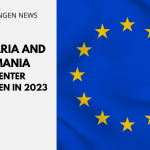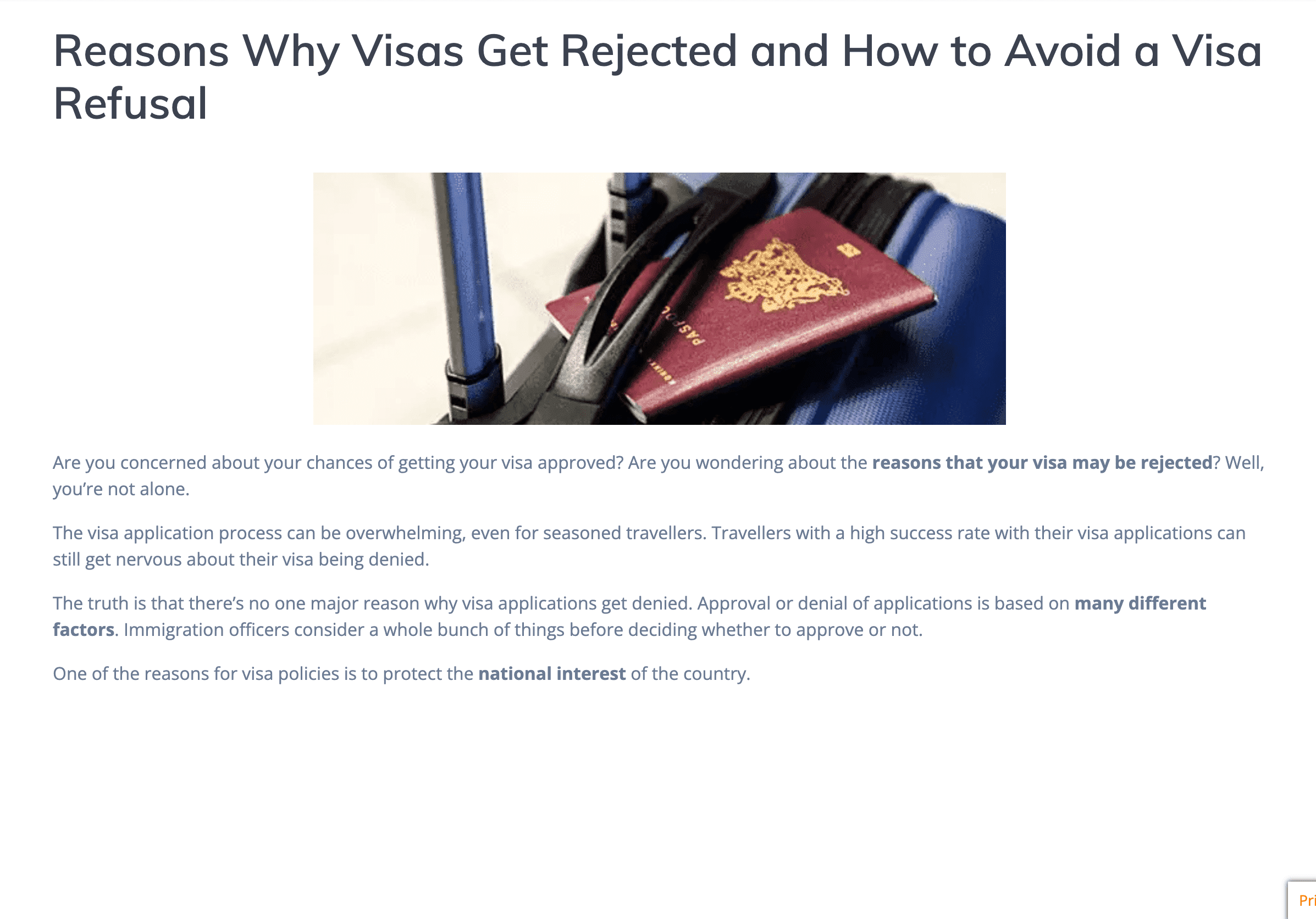What is the Schengen Agreement?

Contents
[su_spoiler title=”Contents In this Article” icon=”plus-circle”]History and Development of the Schengen Agreement
Key Points of the Schengen Acquis
1. Freedom of movement for member countries
2. Harmonised visa policies of Schengen Countries
– Countries That Require Schengen Visas
3. External border checks according to a common Schengen standard and close police and judicial cooperation
4. Joint efforts to combat drug-related crime
Schengen Countries
Country Border Checks Abolished
Switzerland
Denmark, Ireland and the United Kingdom
Iceland and Norway
Andorra, Liechtenstein and San Marino
Bulgaria, Romania and Cyprus
Other countries looking to join Schengen
Territories of Schengen States not party to the Schengen Agreement
– France’s Territories
– Netherlands in the Caribbean
– Norway’s Territories
– Denmark's Territories
The precursor to the Schengen Agreement was a customs and free trade union between Belgium, Netherlands and Luxembourg, known as Benelux. The Benelux union dated back to the end of the second world war where the three countries decided to work together with the aim of improving their economies and cooperate together.
The results of the Benelux union showed economic growth that was seen by other European countries as a success. Due to the economic growth, other European countries wanted to join such a union, with France and the Netherlands later joining to form the Schengen Agreement.
History and Development of the Schengen Agreement
On 14 June 1985, Belgium, France, Germany, Luxembourg and the Netherlands signed the Schengen Agreement on the gradual abolition of checks at their common borders in the small town of Schengen in Luxembourg, on the border to France and the Netherlands.
The agreement has since then led to removing border requirements like duty and visa requirements. It led to the creation of a European internal market with the creation of the world's largest visa-free area. But that did not start straight away.
On 19 June 1990 the Convention Implementing the Schengen Agreement was signed. Its key points relate to measures designed to create, following the abolition of common border checks, a common area of security and justice. Specifically, it is concerned with:
- harmonizing provisions relating to entry into and short stays in the Schengen area by non-EU citizens (uniform Schengen visa),
- asylum matters (determining in which Member State an application for asylum may be submitted),
- measures to combat cross-border drugs-related crime,
- police cooperation, and
- cooperation among Schengen states on judicial matters.
From that point, the Schengen member states, and the Schengen Area, really started to gather momentum as on 27 November 1990 Italy joined, on 25 June 1991, so did Portugal and Spain and on 6 November 1992, Greece joined
The Convention Implementing the Schengen Agreement entered into force on 1 September 1993. Its provisions could not take practical effect, however, until the necessary technical and legal prerequisites such as data banks and the relevant data protection authorities were in place. The Convention thus took practical effect on 26 March 1995.
With the entry into force on 1 May 1999 of the Schengen Protocol to the Treaty of Amsterdam of 2 October 1997, Schengen cooperation – initially based only on an international agreement – was incorporated into EU law.

The European Community thereby assumed responsibility for large parts of the Schengen acquis (the Schengen Agreement and associated body of regulations) and its further development.
For the EU Member States, there are considerable advantages in belonging to the Schengen area. For EU citizens the abolition of checks at the Schengen area's internal borders means not only greater freedom of movement but also greater security. To compensate for the absence of checks at the Schengen area's internal borders, other measures such as mobile border area patrols and improved police networking as well as better and more effective checks at its external borders have been introduced.
Since 1995 there have been several expansions of the Schengen area. Austria acceded to the Schengen Agreement in 1997 and the Nordic countries Denmark, Finland, Iceland, Norway and Sweden on 19th December 1996, but implemented in 2000. On 16 April 2003, the European Council decided to expand the Schengen area to include the new EU Member States of the Czech Republic, Estonia, Hungary, Latvia, Lithuania, Malta, Poland, Slovakia and Slovenia and in October 2004 Switzerland. In December 2007, these countries then abolished their borders between each other with the Swiss following a year after.
In February 2008, Liechtenstein was the 26th and the last country to sign the Schengen Agreement and become part of the Schengen Area. It went ahead and abolished its border controls in December 2011. Others are still trying to join the Schengen Area.
Key Points of the Schengen Acquis
1. Freedom of Movement for Member Countries
Citizens of Schengen countries can cross the Schengen area’s internal borders without undergoing identity checks.
Citizens of countries not part of the Schengen Agreement, called third-countries, need to apply for the correct Schengen visa type that corresponds to their purpose of travel.
Persons granted a short-stay visa with no territorial restrictions (category “C” visa) by a Schengen country may, for the duration of the visa’s validity, stay and travel freely in the territory of any other Schengen country. Holders of such visas may also cross the Schengen area’s internal borders without undergoing identity checks. Air passengers with transit visas (category “A” visa) are entitled only to enter the international transit area at airports but not the Schengen area itself.
Third-country nationals with a national residence permit issued by a Schengen country may, for the duration of its validity, travel for up to 90 days per 6-month period to any other Schengen country. This also applies to holders of a national visa (category “D” visa) issued by a Schengen country.
2. Harmonised Visa Policies of Schengen Countries
A Uniform Schengen Visa allows visitors to apply for a single visa for all countries that are part of the Schengen Agreement.
Countries that require a Schengen visa
Below are the list of countries that require Schengen visas. Check out our full guide on who needs a Schengen Visa.
[su_tabs][su_tab title=”A-C”][su_table]| Afghanistan | Algeria | Angola |
| Armenia | Azerbaijan | Bahrain |
| Bangladesh | Belarus | Belize |
| Benin | Bhutan | Bolivia |
| Botswana | Burkina Faso | Burma/Myanmar |
| Burundi | Cambodia | Cameroon |
| Cape Verde | Central African Republic | Chad |
| China | Comoros | Congo |
| Cote D'iviore | Cuba |
| Dem. Rep. Of Congo | Djibouti | Dominican Republic |
| Ecuador | Egypt | Equatorial Guinea |
| Eritrea | Ethiopia | Fiji |
| Gabon | Gambia | Ghana |
| Guinea | Guinea-Bissau | Guyana |
| Haiti | India | Indonesia |
| Iran | Iraq |
| Jamaica | Jordan | Kazakhstan |
| Kenya | Kosova | Kuwait |
| Kyrgyzstan | Laos | Lebanon |
| Lesotho | Liberia | Libya |
| Madagascar | Malawi | Maldives |
| Mali | Mauritania | Mongolia |
| Morocco | Mozambique | Namibia |
| Nepal | Niger | Nigeria |
| North Korea | Northern Mariana's | Oman |
| Pakistan | Papua New Guinea | Philippines |
| Qatar | Russia | Rwanda |
| Sao Tome And Principe | Saudi Arabia | Senegal |
| Sierra Leone | Somalia | South Africa |
| Sri Lanka | Sudan | Suriname |
| Swaziland | Syria | Tajikistan |
| Tanzania | Thailand | Timor-Leste |
| Togo | Tonga | Tunisia |
| Turkey | Turkmenistan | Uganda |
| Uzbekistan |
| Vietnam | Yemen | Zambia |
| Zimbabwe |

3. External Border Checks According to a Common Schengen Standard and Close Police and Judicial Cooperation
Access by all Schengen countries to the Schengen Information System (SIS), which provides data on persons and objects throughout the Schengen area, especially in connection with inquiries by police and judicial authorities.
4. Joint efforts to Combat Drug-Related Crime
Rules determining competence for asylum procedures, now replaced by Council Regulation (EC) No. 343/2003 of 18 February 2003 (so-called Dublin II Regulation).
Schengen Countries
The following is a list of Schengen countries that fully implement the Schengen acquis (so-called fully implementing countries), along with details of when border checks were or are due to be abolished:
Country Border checks abolished
- 26 March 1995- Belgium, France, Germany, Greece, Italy, Luxembourg, the Netherlands, Portugal, Spain
- 1 Dec. 1997 – Austria
- 1 Dec. 2000 – Denmark, Finland, Iceland, Norway, Sweden
- 21 Dec. 2007 – Czech Republic, Estonia, Hungary, Latvia, Lithuania, Malta, Poland, Slovakia, Slovenia
- 12 Dec. 2008 – Switzerland (land borders)
- 29 March 2009 – Switzerland (airports)
- 12 Dec 2011 – Liechtenstein
Following the complete abolition of border controls anyone holding a uniform Schengen visa may enter any other fully implementing country for up to 90 days per 6-month period for the duration of the visa's validity.
Switzerland
Following the vote by the Swiss in June 2005 approving the Agreement with the European Union and the European Community on their country's association with the Schengen acquis, Switzerland has been applying the provisions of the Schengen Agreement since 12 December 2008. Checks at airports were removed on 29 March 2009.
Denmark, Ireland and the United Kingdom
For the EU Member States, Denmark, Ireland and the United Kingdom (before Brexit) special arrangements were made.
While Denmark fully implements the Schengen acquis, it made a reservation on signing the Schengen Agreement regarding the implementation and application of future decisions taken under the Agreement. It will decide on a case-by-case basis whether to participate, under international law, in the further development of the acquis and to incorporate into its national law also Community law developed without its participation. Denmark is, however, bound to implement certain measures relating to the common visa policy.
While Ireland, and prior to Brexit, the United Kingdom were not parties to the Schengen Agreement, now that Brexit is complete, only Ireland is left with the special arrangement. The special arrangement means that Ireland can, with the approval of the EU Council, apply the Schengen acquis in whole or in part and participate in its further development.
Ireland does not issue Schengen visas and applies the Schengen Agreement only in part. The EU Council has approved an application by Ireland to participate in the enhanced cooperation between police and judicial authorities in criminal justice matters, the fight against drug-related crime and the Schengen Information System (SIS). However, Ireland has not abolished border checks.
With the completion of Brexit, the UK lost access to the Schengen and EU zone, the Schengen Aquis, the SIS and other shared security databases like ECRIS, Prüm & PNR.
Iceland and Norway
Although neither Iceland nor Norway are EU Member States, both countries fully implement the Schengen acquis on the basis of the Association Agreements they concluded with the EU on 18 May 1999.
They both belong (together with Denmark, Finland and Sweden) to the Nordic Passport Union, which has abolished checks on its members' common borders. On 1 December 2000 the EU Council decided that the Schengen acquis should take effect in all five countries belonging to the Nordic Passport Union. Since then Iceland and Norway have been fully implementing countries. The regulations relating to the Schengen Information System (SIS) have been in force since 1 January 2000.
As regards those areas of the Schengen acquis that apply to Iceland and Norway, relations between these two countries on the one hand and Ireland and the United Kingdom on the other are governed by an agreement approved by the EU Council on 28 June 1999.
In practice the non-EU members Iceland and Norway participate in Schengen-related work through mixed committees that meet parallel to EU Council working parties. Their meetings are attended by representatives of the governments of EU Member States, the Commission and third-country governments. Iceland and Norway thus take part in discussions on the further development of the Schengen acquis but not in any votes taken in this connection.
Andorra, Liechtenstein and San Marino
While Andorra has not actually signed the Convention Implementing the Schengen Agreement, it has no checks at its borders with neighbouring countries Spain and France.
Liechtenstein has a monetary and customs union with Switzerland. It has no checks at its border with Switzerland and now that Switzerland, too, is a Schengen country, all border checks have been removed.
San Marino has not signed the Convention Implementing the Schengen Agreement either, but has no checks at the border with its only neighbour, Italy.

Bulgaria, Romania and Cyprus
Although they are EU Member States, Bulgaria and Romania (accession on 1 January 2007) and Cyprus (accession on 1 May 2004) implement the Schengen acquis only in part and consequently do not issue Schengen visas.
For the full implementation of the Schengen acquis certain requirements must be met. These include the introduction of the second-generation Schengen Information System (SIS II) and the successful conclusion of evaluations to determine whether the requirements for full implementation have in fact been met. Only then can border checks be abolished.
Romania and Cyprus are looking forward to joining the Schengen Zone soon once they pass all the requirements, with Cyprus being one step closer to this goal after passing the data protection assessment.
Other Countries Looking to Join Schengen
Croatia has recently announced its intentions to join the Schengen Area by mid-2024.
In October 2019, the European Commission stated that Croatia had met all the technical requirements to enter the Schengen Zone. However, there is continuous criticism by the EU Parliament of the country's brutal treatment of migrants by police authorities.
Territories of Schengen States not party to the Schengen Agreement
Other than the Azores, the Canary Islands and Madeira, no other country that is located outside of the European continent is part of the Schengen Area or has have signed the Schengen Agreement.
France's Territories
Located outside Europe, French Guiana, Guadeloupe, Martinique, Mayotte, Réunion, and Collectivity of Saint Martin are members of the EU but are not of the Schengen Area. It means that even a Schengen visa issued by France is not valid in these territories. They each have their own visa policies and regimes for nonmembers of the European Economic Area and non-nationals of Switzerland.
France's other territories, located also outside of the Europe are not members of the EU or Schengen Area: French Polynesia, French Southern, and Antarctic Lands, Caledonia, Saint Barthélemy (which left the EU as a precursor to Brexit), Saint Pierre and Miquelon, and Wallis and Futuna.
Netherlands in the Caribbean
These Dutch Carribean territories are not part of the EU or of the Schengen Area, and they have their own visa policy and regime: Bonaire, Sint Eustatius, and Saba (BES Islands) and Aruba, Curaçao, and Sint Maarten (independent countries of the Kingdom of Netherlands).
Norway's Territories
Although Svalbard enjoys a special status under International Law, it is not part of the Schengen area. You do not need a visa to enter Svalbard, but if you are entering through Norway, any non-EU national cannot enter it without traveling through the Schengen Area. Therefore, you will need at least a double entry Schengen visa
Denmark‘s Territories
Both the Faroe Islands and Greenland are not members of the EU or of the Schengen Area. Therefore, you need to get visas for these countries. However, nationals of Nordic Passport Union member countries can enter these two territories using Identification cards
Selected Legal Provisions Relating to the Schengen Agreement (Excerpts)
Agreement of 14 June 1985 between the Governments of the States of the Benelux Economic Union, the Federal Republic of Germany and the French Republic on the Gradual Abolition of Checks at their Common Borders: Joint Ministerial Gazette 1986, p. 79 ff.
Convention of 19 June 1990 Implementing the Schengen Agreement of 14 June 1985 between the Governments of the States of the Benelux Economic Union, the Federal Republic of Germany and the French Republic on the Gradual Abolition of Checks at their Common Borders (Convention Implementing the Schengen Agreement): Federal Law Gazette II 1993, p. 1013 ff.
Act of 15 July 1993 on the Schengen Agreement of 19 June 1990 on the Gradual Abolition of Checks at the Common Borders: Federal Law Gazette II 1993, p. 1010 ff.
Notification of 14 June 1985 of the Entry into Force of the Convention of 19 June 1990 Implementing the Schengen Agreement of 14 June 1985 between the Governments of the States of the Benelux Economic Union, the Federal Republic of Germany and the French Republic on the Gradual Abolition of Checks at their Common Borders (Convention Implementing the Schengen Agreement): Federal Law Gazette II 1994, p. 631 ff.
Treaty of Amsterdam of 2 October 1997: Federal Law Gazette II 1998, p. 386.
Schengen Borders Code (Regulation (EC) No. 562/2006 of 15 March 2006), in effect since 13 October 2006.
Do you have any questions about the Schengen agreement or your experience in the Schengen area? We would love to hear from you. Comment below.
IaM can help with your visa application to the United States, the UK & other countries
If you need help with a US visa, a UK Visa, or a visa to Europe, including help with appointment booking obligations, IaM can help. For more information and advice on US immigration, UK immigration law and US visa applications or if you need any help or assistance please, reach out to your Visa Coordinator at IaM.
- What is the Schengen Agreement? - 13 April 2021
- 30 More Countries You Can Enter, Visit, and Transit With a Valid Schengen Visa - 10 November 2020











